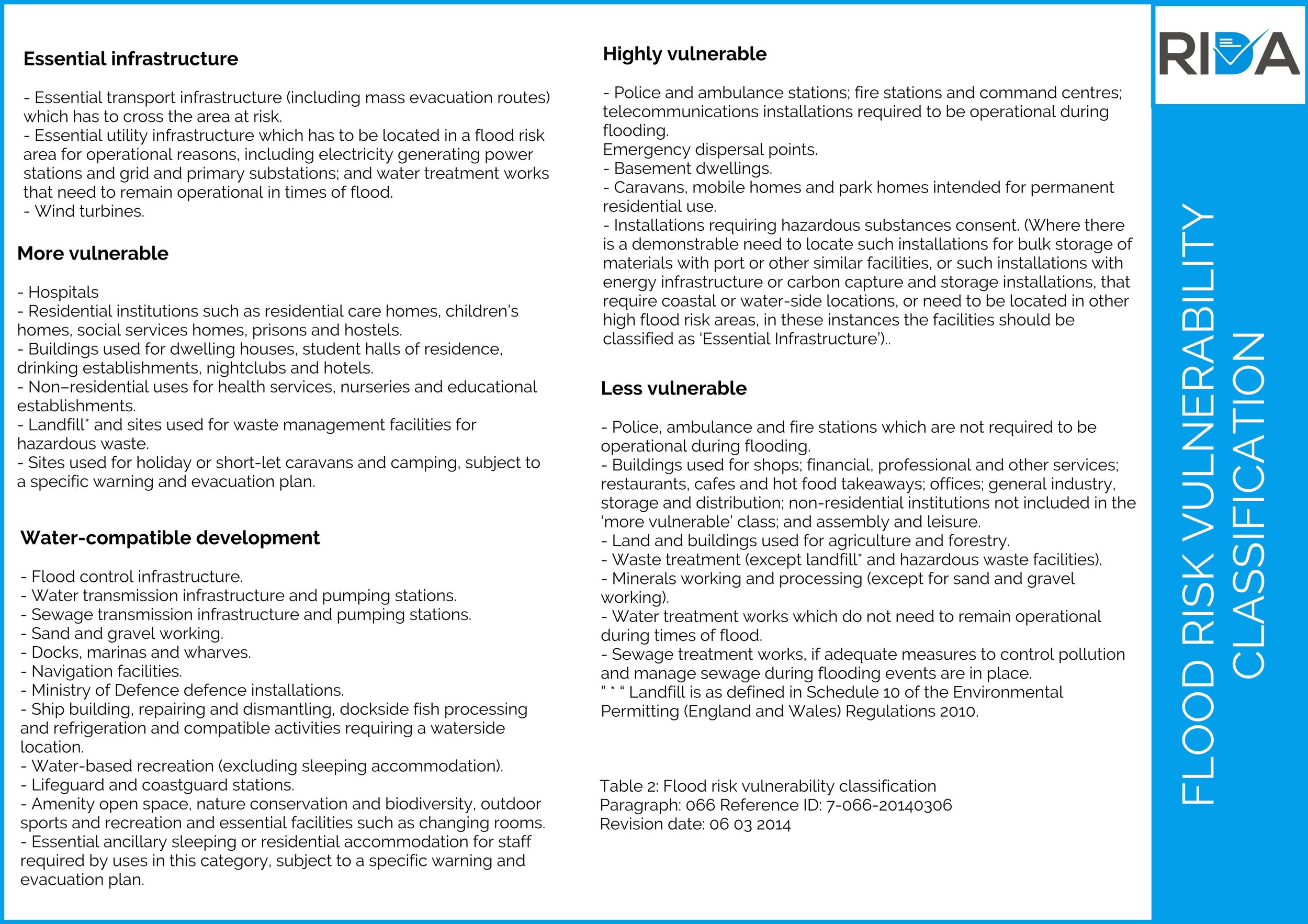Flood risk assessment decision making guide for developers and architects
Our flood risk assessment decision making guide determines the likely complexity of the flood risk assessment for your development and whether your development is appropriate. The guide is based on the guidance produced by the Department for Environment, Food & Rural Affairs and Environment Agency. Our process also follows the requirements set out in The National Planning Policy Framework (NPPF) published by the Ministry of Housing, Communities & Local Government. Our decision-making guide is designed for professionals with a good understanding of the relevant guidelines.
Steps:
Step 1: Determine the location of the development in relation to the Flood Zones
Step 2: Find out your Development’s Flood Risk Vulnerability Classification
Step 3: Use our guide
Step 1: Determine the position of your development within the Flood Zones
The flood zones are based on the probability of a river or the sea flooding an area of land whilst ignoring the presence of defences. There are 3 flood zones which describe the level of probability, the table shows the annual probability for each zone. Please follow this link to access the Environment Agency Flood Map. You will need the post code of your site.
As you notice, the table shows that the flood Zone 3 has been divided into two zones, flood Zone 3a and Zone 3b, however the Environment Agency flood map does not show them. This is because the extent of these zones are determined by the local councils in their Strategic Flood Risk Assessments. You will need to check the Strategic Flood Risk Assessment of your local council to find out the location of these zones.
The figure below shows an example of a development located in flood zone 1.
Step 2: Find your development Flood Risk Vulnerability Classification
The flood risk vulnerability classification of a development is based on the development’s “use class” which is given in the planning application. Depending on the size of the development, it is possible that there could be different vulnerability classifications within it. The flood risk vulnerability classification can be found in the NPPF website. The figure below shows the flood vulnerability classifications.
Step 3: Use our guide
Follow the diagram below to find out if your development is appropriate within the flood zone!.
What happens next?
These are the possible options:
My development is appropriate and may not require a flood risk assessment. Congratulations, your development can get underway. Please make sure you check flooding from other sources adequately such as underground water flooding, surface water run-off and sewer flooding. RIDA reports can help you with your flood risk assessment.
My development is appropriate and requires a flood risk assessment. RIDA reports have the right flood risk assessment report.
My development requires an exception test. RIDA Reports can help you with this. Please get in touch.
My development is not permitted according to NPPF. RIDA reports can still help you! We can work with your architects to look into the planning and uses of your development. Find out more.





